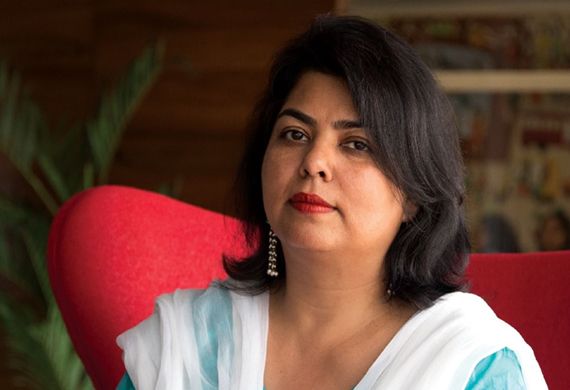
Insights On Inclusivity in Branding & Marketing, Influencer Marketing & More
By: Sumeet Singh, CMO, Info Edge India Ltd
Sumeet Singh, the Chief Marketing Officer (CMO) of Info Edge India Ltd, has been in the industry for over 25 years. She has been a part of Info Edge India for 19 years which is the parent company of prominent brands such as Naukri.com, 99acres.com, Jeevansathi.com, Shiksha.com, Job Hey, Glassdoor, Ambition Box, IIM jobs, and B2B SaaS businesses. As CMO, Sumeet plays a crucial role in shaping and executing the company's marketing strategies across various platforms to enhance brand visibility and drive growth.
Women Entrepreneurs Review Magazine recently had a conversation with Sumeet where she talks about marketing strategies to appeal to diverse demographics, navigating the new-era of influencer marketing and building authentic connection with consumers. She also talks about the importance of fostering diversity and inclusion in brand marketing efforts.
How can professionals strategically craft a brand narrative that resonates across diverse demographics and cultures? Can you provide an example of a successful transformation of a brand's image or perception through communication initiatives, highlighting key success factors?
To effectively reach your audiences, brands should base their advertising on consumer insights and if those insights are similar across geographies &cultures then translate them into respective languages in the geographies where the vernacular is important.
Jeevansathi, a brand for arranged marriages, requires a unique approach to traversing different cultures and cities. By understanding the societal traditions of each community or caste and cultures it might be difficult to have the same asset cut across.
On the other hand, Naukri.com, can be run in multiple places by language translation. Since the insights of white collar jobseekers are similar across the county so simple language edits will be effective.
Could you discuss a time when you faced resistance or skepticism within an organization regarding a proposed branding or marketing strategy? How did you overcome these challenges and garner buy-in from key stakeholders?
At InfoEdge, our marketing strategy is completely business-aligned, involving discussions with business heads to craft budgets and strategies, thus most times there isn’t a conflict. However, sometimes, the business or management may not agree with the strategy being proposed. To overcome this, data-backed decisions and reasonable listening are crucial. Listening to others' arguments can help tune the strategy better and identify missed angles. It's important to be open to feedback and rework the strategy as needed. It's not always possible to win the group over in one meeting, so it's essential to have data back your arguments. If the strategy is sure to work, it must come from gut feelings and data support. It's important to continue having discussions and dialogue and to be open to listening and taking feedback too.
With the rise of influencer marketing and user-generated content, how do we integrate these tactics into our overall branding strategy to amplify brand reach and foster authentic connections with our target audience?
Content marketing today has become crucial for brands as youngsters spend more time consuming digital content, such as YouTube, sites, apps, and social media. Brands must be present where their target audience is, as only if their marketing reaches audiences will succeed. Influencers play a significant role in today’s marketing. The best influencer marketing strategies involve traversing all three types: macro, micro, and nano influencers. While large influencers can generate millions of views, it is essential to sustain these activities to ensure their impact continues. A sustainable strategy involves using large influencers as a spike and using micro and nano influencers to navigate through the community. Regional influencers can also be effective in specific communities.
Diversity and inclusion are increasingly important considerations for brands today. How do leaders ensure that their branding and marketing efforts are inclusive and representative of diverse perspectives, cultures, and communities?
Brands should embrace diversity and inclusion in their advertising, focusing on products and services that represent all types of genders. Most brands are sensible enough to be inclusive, following safety guidelines and understanding the sentiment of the youth today. They should not try to create ads based on biases that will upset their target audience. Most mature brands are exercising these sensibilities today. However, for those who are not, it is good practice to show their ads to a group of people from all genders before releasing them to get diverse perspectives. This helps create better advertising that adheres to the principles of diversity, inclusion, and inclusivity.
As a CMO, you're likely balancing multiple objectives, from increasing brand awareness to driving customer engagement and loyalty. How can marketers strike a balance between short-term marketing goals and long-term brand-building efforts in an overall strategy?
A good marketeer should have a hybrid approach, combining short-term and long-term strategies. Short-term results are immediate and are very much needed & early wins also help balance long-term investments. A medium-term strategy, which includes lower-hanging, immediate results, is essential. A short-to-medium-term strategy, built from a forward-looking perspective, is crucial. However, brands that operate in the short term only may have immediate results but struggle to build as a brand in the long run. In tough times, marketing budgets may be cut, and a brand's sustainability is at risk. The right balance between long-term and short-term investments depends on each business stage life of the brand. A brand in a cluttered market may require a balance between both long-term & short-term investment branding while a market leader with little competition might require a different strategy. The right mix is essential, and no formula is universally applicable.
Message to Readers
Young professionals must remember that they are the CEO of their careers. I encourage them to take on more opportunities, be smart at work, and be a sponge for learning and exposure. It is important to have an outside in approach. Hard work and constant learning are essential for personal/ professional growth and success in any field.


.jpg)



